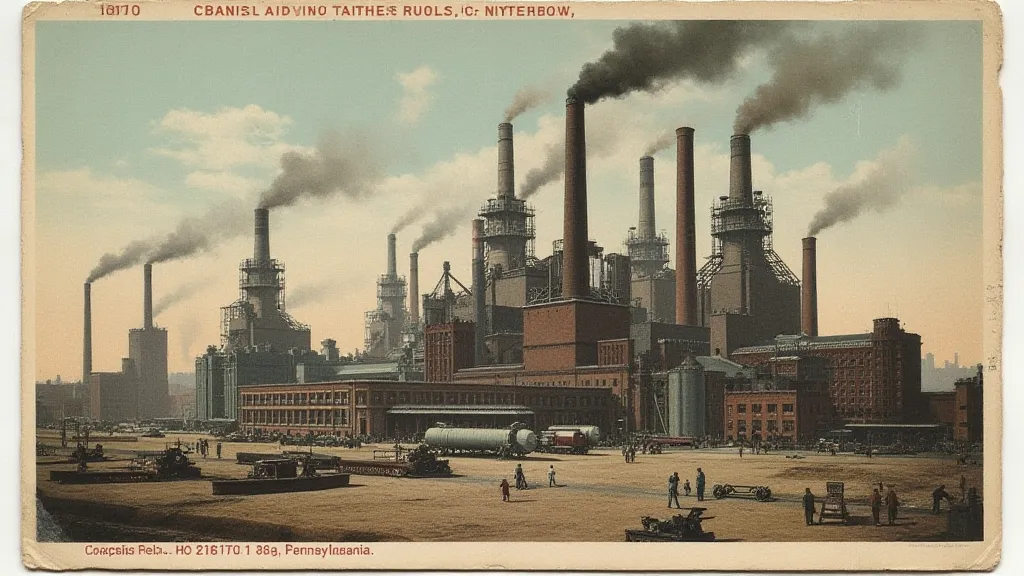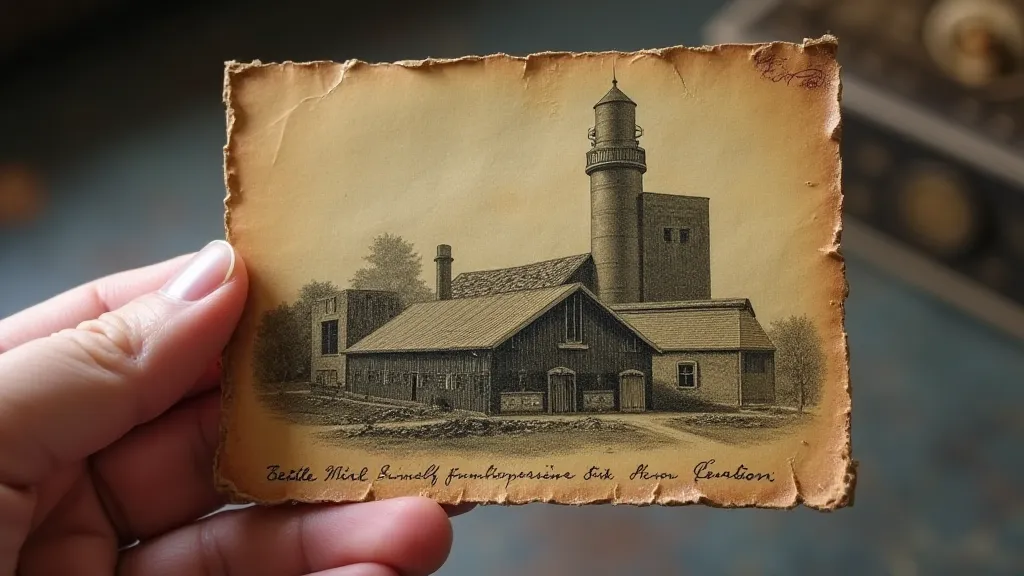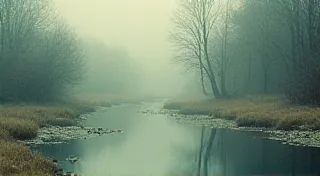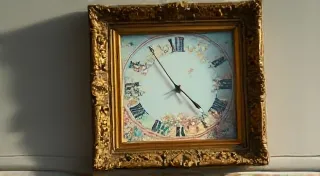Beyond the Beach: The Postcard’s Representation of Industrial Landscapes
We often associate vintage postcards with sun-drenched beaches, charming European villages, and sweeping vistas of natural beauty. They’re windows into a bygone era, offering glimpses of leisurely vacations and idyllic scenes. But what about the places that weren’t deemed picturesque? What about the grimy, the bustling, the undeniably *working* landscapes that powered a nation? While beach scenes and mountain panoramas clamored for space on racks in general stores, a fascinating, often overlooked corner of the vintage postcard world depicts something quite different: industrial landscapes. They tell a story of progress, labor, and a different kind of beauty – the beauty of human ingenuity and relentless effort.

The Rise of the Industrial Postcard
The late 19th and early 20th centuries were a period of unprecedented industrial growth. The United States, and many nations across Europe, were undergoing rapid urbanization and mechanization. New factories, railways, and infrastructure projects were springing up across the land, transforming the landscape and, consequently, the lives of the people who lived and worked within them. The rise of the postcard itself, popularized by the 1893 Chicago World’s Fair, coincided perfectly with this era of industrial expansion. Suddenly, relatively inexpensive and easy-to-send images could be disseminated widely, allowing people to share their experiences – or at least a curated version of them – with friends and family.
Initially, postcards focused on traditional travel destinations. But as photography became more accessible and printing techniques improved, opportunities arose to document the burgeoning industrial heartlands. Businesses recognized the potential of showcasing their operations – a testament to their success and a tool for advertising. Workers, too, began sending postcards home, illustrating not just their location but also the powerful industry that employed them.
More Than Just Smoke and Grit
It's easy to dismiss these industrial postcards as bleak and unattractive. The images often feature towering factories, belching smokestacks, and bustling railway yards. The scenes are devoid of the soft, romantic light we often associate with traditional travel photography. But looking closer reveals a surprising complexity and a certain austere beauty. There’s a power in these images; a sense of the sheer scale of human effort required to build and operate these industries.
Think about the detail. A postcard depicting a coal mine isn't just about the blackness of the pit. It's about the intricate network of rail lines transporting ore, the massive machinery extracting the coal, and the men – often young boys – who risked their lives daily to perform the arduous labor. The faces, often blurred in the early photographic techniques, hint at the resilience and determination of the workforce. They were the backbone of the nation, and their story, though often overlooked, is integral to the broader narrative of the industrial age.
Furthermore, the architecture itself often possessed a striking elegance. Factories, power plants, and bridges weren't built as aesthetic failures; they were designed with functionality and durability in mind. The repetitive rhythm of the brickwork, the soaring arches of railway bridges, the sheer solidity of the structures – these elements, when captured through the lens of a postcard photographer, can be surprisingly captivating. It’s a different kind of beauty, yes, but beauty nonetheless.
A Personal Connection: My Grandfather’s Collection
I inherited my grandfather's postcard collection several years ago. He was a retired engineer, a man who clearly appreciated the mechanics and intricacies of the industrial world. While his collection included the expected vacation scenes, I was most drawn to the postcards depicting factories, bridges, and power stations. He’s long gone, but examining these faded images allows me a profound connection to him and the values he held dear. I recall him explaining the workings of a massive hydroelectric dam in the Adirondacks – pointing out the turbines and explaining the principles of power generation with a quiet passion that captivated me as a young boy.
One postcard in particular stands out. It depicts the Edgar Thomson Generating Station in Jeannette, Pennsylvania, a massive coal-fired power plant. The image isn’s glamorous, but the way the light catches the metal scaffolding and the sheer scale of the structure is mesmerizing. On the back, in my grandfather's meticulous script, are a few lines: "Impressive engineering. A testament to human ingenuity." It's a simple message, but it encapsulates the reverence he held for the industrial landscape.
Restoration & Collecting: Preserving a Legacy
Collecting vintage postcards, especially those focused on industrial scenes, presents unique challenges. These cards are often more fragile than their beach-themed counterparts, having endured years of handling and exposure to the elements. The inks have often faded, and the paper can be brittle and prone to tearing.

Gentle cleaning with archival-quality materials is often necessary. Avoid harsh chemicals or excessive rubbing, as this can further damage the image. Professional restoration can be considered for particularly valuable cards, but it's important to find a conservator experienced in vintage paper and photographic restoration. Storage is equally crucial; storing postcards in acid-free sleeves and boxes will help to protect them from further degradation.
As for collecting, specializing in a particular type of industrial postcard – perhaps those depicting a specific industry, region, or period – can be both rewarding and manageable. Prices for these cards can vary significantly depending on rarity, condition, and subject matter. The key is to do your research, network with other collectors, and develop an eye for detail. It’s a journey of discovery, a chance to delve into a fascinating and often forgotten chapter of industrial history.
Beyond the Image: A Human Story
These vintage postcards, depicting the factories, mines, and infrastructure of the industrial age, are more than just historical documents. They are windows into the lives of the men and women who built this nation. They offer a glimpse of a world driven by relentless progress, fueled by human ingenuity, and marked by both triumph and hardship. They remind us that beauty can be found in unexpected places – even in the heart of an industrial landscape. The next time you’re browsing a postcard rack or online marketplace, take a moment to look beyond the beach and discover the beauty and the power of the industrial postcard.





